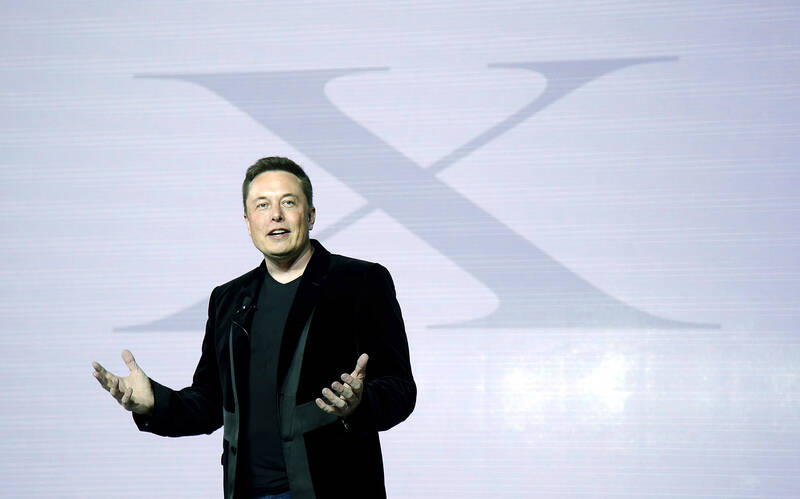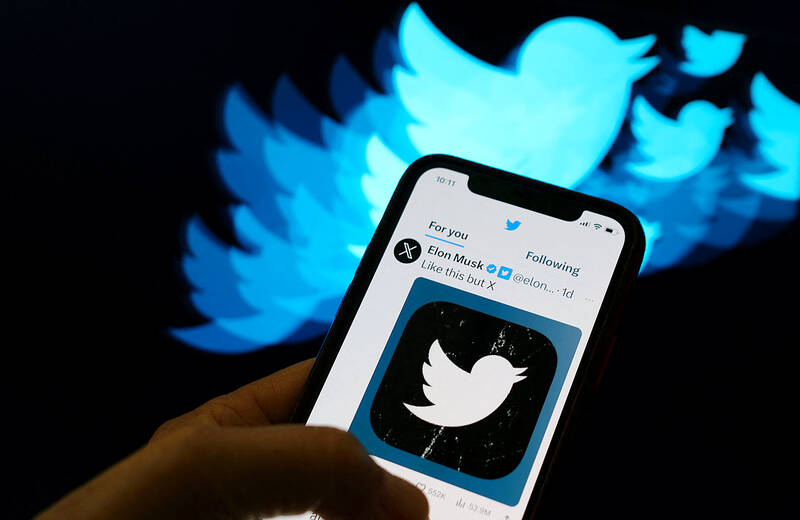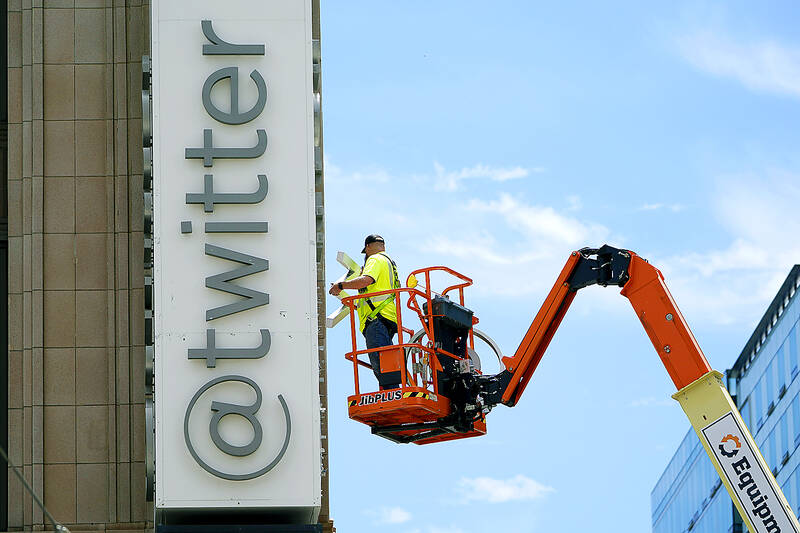Elon Musk may want to send “tweet” back to the birds, but the ubiquitous term for posting on the site he now calls X is here to stay — at least for now.
For one, the word is still plastered all over the site formerly known as Twitter. Write a post, you still need to press a blue button that says “tweet” to publish it. To repost it, you still tap “retweet.”
But it’s more than that.

Photo: AP
With “tweets,” Twitter accomplished in just a few years something few companies have done in a lifetime: It became a verb and implanted itself into the lexicon of America and the world. Upending that takes more than a top-down declaration, even if it is from the owner of Twitter-turned-X, who also happens to be one of the world’s richest men.
“Language has always come from the people that use it on a day-to-day basis. And it can’t be controlled, it can’t created, it can’t be morphed. You don’t get to decide it,” said Nick Bilton, the author of Hatching Twitter: A True Story of Money, Power, Friendship, and Betrayal about Twitter’s origins.
INTO THE DICTIONARY

Photo: AFP
Twitter didn’t start out as Twitter. It was “twttr” — without vowels, which was the trend in 2006 when the platform launched and SMS texting was wildly popular. The iPhone only came out in 2007.
Twitter co-founder Evan Williams “went one day and purchased the vowels, two vowels for essentially US$7,500 each,” when he bought the URL for twitter.com from a bird enthusiast, Bilton said.
At the beginning, people didn’t “tweet” — it was “I’m going to twitter this,” Bilton recalled. But “twittered” doesn’t roll off the tongue and “tweet” soon took over, first in the Twitter office, then San Francisco, then everywhere.

Photo: AP
We’ve been tweeting for well over a decade. World leaders, celebrities and athletes, dissidents in repressive regimes, propaganda trolls, sex workers and religious icons, meme queens and actual queens. Former president Donald Trump’s incendiary use of the bird app quickly punted “tweet” into near-constant headlines during his presidency. People who never signed up for Twitter knew what the word meant.
For now, we still tweet, retweet and quote tweet, and sometimes — perhaps not often enough — delete tweets. News sites embed tweets in their stories and TV programs scroll them. No other social network has a word for posting that’s entered the vernacular like “tweet” — though Google did the same for “googling.”
The Oxford English Dictionary added “tweet” in 2011. Merriam-Webster followed in 2013. The Associated Press Stylebook entered it in 2010.
“Getting into the dictionary is an indication that people are already using it,” said Jack Lynch, a Rutgers University English professor who studies the history of language. “Dictionaries are usually pretty tentative or cautious about letting new words in, especially for new phenomena, because they don’t want things to be just a flash in the pan.”
FRIENDLY LOGO
As Twitter grew into a global communications platform and struggled with misinformation, trolls and hate speech, its friendly brand image remained. The blue bird icon evokes a smile, like the Amazon up-turned-arrow smile — in contrast to the X that Musk has imposed.
Martin Grasser was two years out of art school when Twitter hired him for the logo redesign in 2011. His wasn’t the first bird logo for Twitter, but it would be the most enduring.
“They knew they wanted a bird. So we weren’t starting completely over, but they wanted it to be on par with Apple and Nike. That was really the brief,” he said.
Twitter launched Grasser’s design in May 2012; the company went public on Wall Street later that year.
One early in-house design shown to Grasser looked like “a flying goose with a tail. It looked kind of like a dragon. It was crazy,” he said. Jack Dorsey, another co-founder (and twice-CEO) wanted something simpler.
The bird represented a vision of Twitter as a friendly place “where everyone can weigh in and chat,” Grasser said.
“The round form evokes a sense of optimism, the bird even being sort of turned upward, as corny as that sounds, I think is different than a bird flying down or flat,” he said. “We wanted to give it this idea of like soaring.”
The word “Twitter” itself is playful, as is “tweet.” This was no accident, Bilton said.
Other names that floated as the platform started out included “Status” and “Friend Stalker.”
It was Noah Glass, another co-founder who never quite got the credit he deserved for his role in hatching Twitter, who had the winning idea.
Glass, Bilton said, “had been thinking about like heartbeats and emotions. He was going through a divorce and he literally went through the dictionary word by word until he came across the word twitter. And he just knew instantly that was it.”
“He was one of the four founders who had the emotional intelligence to be able to understand that this was about connecting with humans,” Bilton said. “It was inviting, it was emotional. It was about connecting with humans and your friends and your loved ones.”
MASSIVE OVERHAUL
Musk began his quest erasing Twitter’s corporate culture and image in favor of his own vision as soon as he took over the company in October last year. He lost three-quarters of the company’s staff through firings, layoffs and voluntary departures, auctioned off furniture and decor, and upended policies on hate speech and misinformation. The rebranding to X was no surprise.
Twitter’s rebranding is rooted in ambition that Musk began to pursue nearly a quarter century ago after he sold his first startup, Zip2, to Compaq Computer. He set out to create a one-stop digital shop for finance called X.com — an “everything” service that would provide bank accounts, process payments, make loans and handle investments.
He has not given up on the dream. Twitter is now X, falling in line with Musk’s other X-named brands, SpaceX and Tesla’s Model X. Not to mention his young son, whom he calls “X.”
His goal for X is to turn it into an “everything” app — for video, photos, messaging, payments and other services, although he has given few details. For now, X.com is still, essentially Twitter.com, even as the blue bird and other playful tidbits start to disappear.
“There used to be a saying inside Twitter that Twitter was the company that couldn’t kill itself. I think that still rings true, whether it’s called Twitter or X,” Bilton said.
“I think that it’s kind of become a fabric of society. And even Elon Musk may not be able to break it.”

On April 26, The Lancet published a letter from two doctors at Taichung-based China Medical University Hospital (CMUH) warning that “Taiwan’s Health Care System is on the Brink of Collapse.” The authors said that “Years of policy inaction and mismanagement of resources have led to the National Health Insurance system operating under unsustainable conditions.” The pushback was immediate. Errors in the paper were quickly identified and publicized, to discredit the authors (the hospital apologized). CNA reported that CMUH said the letter described Taiwan in 2021 as having 62 nurses per 10,000 people, when the correct number was 78 nurses per 10,000

As we live longer, our risk of cognitive impairment is increasing. How can we delay the onset of symptoms? Do we have to give up every indulgence or can small changes make a difference? We asked neurologists for tips on how to keep our brains healthy for life. TAKE CARE OF YOUR HEALTH “All of the sensible things that apply to bodily health apply to brain health,” says Suzanne O’Sullivan, a consultant in neurology at the National Hospital for Neurology and Neurosurgery in London, and the author of The Age of Diagnosis. “When you’re 20, you can get away with absolute

May 5 to May 11 What started out as friction between Taiwanese students at Taichung First High School and a Japanese head cook escalated dramatically over the first two weeks of May 1927. It began on April 30 when the cook’s wife knew that lotus starch used in that night’s dinner had rat feces in it, but failed to inform staff until the meal was already prepared. The students believed that her silence was intentional, and filed a complaint. The school’s Japanese administrators sided with the cook’s family, dismissing the students as troublemakers and clamping down on their freedoms — with

As Donald Trump’s executive order in March led to the shuttering of Voice of America (VOA) — the global broadcaster whose roots date back to the fight against Nazi propaganda — he quickly attracted support from figures not used to aligning themselves with any US administration. Trump had ordered the US Agency for Global Media, the federal agency that funds VOA and other groups promoting independent journalism overseas, to be “eliminated to the maximum extent consistent with applicable law.” The decision suddenly halted programming in 49 languages to more than 425 million people. In Moscow, Margarita Simonyan, the hardline editor-in-chief of the